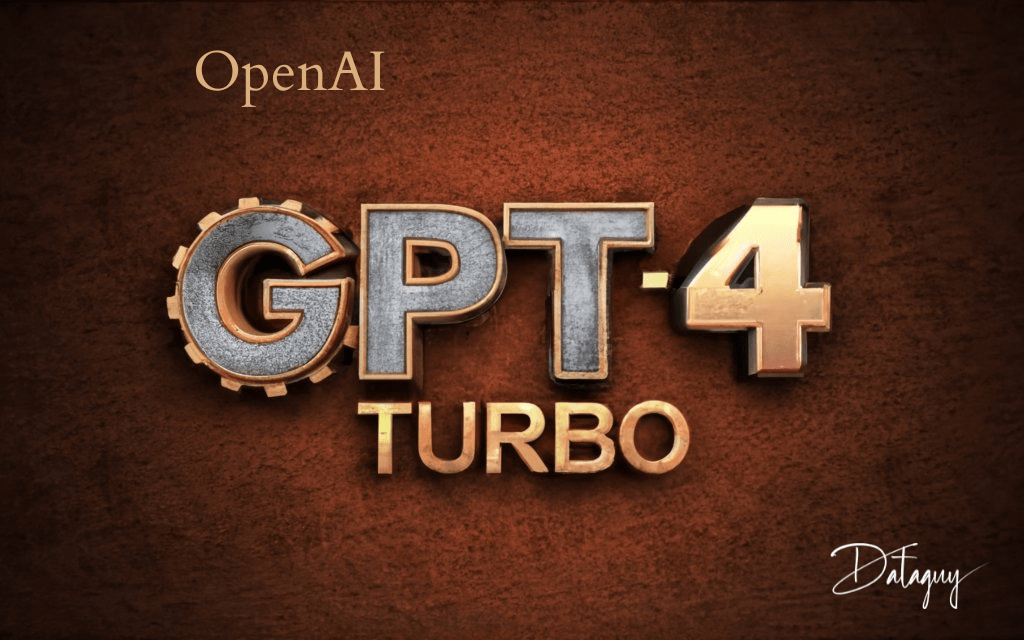Last updated on August 19th, 2024 at 03:23 pm
Insights Index
ToggleGPT-4 Turbo: Redefining AI Excellence with 128K Context Length
Introduction
In the realm of artificial intelligence, OpenAI’s latest marvel, GPT-4 Turbo, emerges as a game-changer. With a remarkable 128K context window and a myriad of enhanced features, it’s reshaping how developers approach AI applications. Let’s delve into the transformative elements that make GPT-4 Turbo a revolutionary force in the tech world.
GPT-4 Turbo: Unveiling Limitless Possibilities
OpenAI introduces GPT-4 Turbo, a powerhouse equipped with a 128K context window. This advancement enables the processing of over 300 pages of text in a single prompt, paving the way for more intricate and comprehensive interactions within applications. Moreover, developers will appreciate its affordability, being three times cheaper for input tokens and two times cheaper for output tokens compared to its forerunner.
Enhanced Functionality: Streamlined Interactions
GPT-4 Turbo boasts enhanced function calling capabilities, allowing users to describe multiple functions in a single message. The model excels in accurately returning the right function parameters, simplifying interactions and reducing complexities in application development. Additionally, the introduction of a new JSON mode ensures valid JSON responses, ensuring seamless data integration.
Reproducible Outputs and Log Probabilities: Ensuring Consistency
OpenAI introduces a new seed parameter, enabling reproducible outputs. Developers can now rely on consistent completions, making debugging and unit testing more efficient. Soon, GPT-4 Turbo will provide log probabilities for the most likely output tokens, a feature invaluable for functions like autocomplete in search experiences.
Comprehensive Updates: GPT-3.5 Turbo and More
GPT-3.5 Turbo receives a significant upgrade, supporting a 16K context window by default. This enhancement showcases a notable 38% improvement in tasks involving specific formats like generating JSON, XML, and YAML. Developers using the older version will transition automatically to the new model, ensuring a seamless experience until June 13, 2024.
Assistants API: Elevating User Experiences
OpenAI introduces the Assistants API, empowering developers to create agent-like experiences within their applications. This toolkit includes the Code Interpreter, Retrieval, and function calling, enhancing data analysis and coding assistance.
Code Interpreter enables assistants to run Python code iteratively, while Retrieval seamlessly incorporates external knowledge. Function calling allows the invocation of custom functions, tailoring interactions to specific requirements.
Vision, DALL·E 3 Integration, and Text-to-Speech Capabilities: Multi-Sensory Experiences
GPT-4 Turbo’s vision support, currently in progress, opens avenues for image inputs in tasks like generating captions. Integration with DALL·E 3 via the Images API facilitates image and design generation, adding a creative dimension to applications. Additionally, the Text-to-Speech (TTS) API delivers human-quality speech synthesis from text, enhancing user interactions through natural auditory experiences.
Experimental Access and Customization: Tailoring AI to Unique Needs
OpenAI initiates an experimental access program for GPT-4 fine-tuning, inviting developers to explore advanced customization. Additionally, the Custom Models program empowers organizations to collaborate with OpenAI researchers, crafting domain-specific GPT-4 models tailored to their unique needs. These initiatives ensure extensive customization, enabling AI solutions finely tuned to specific contexts.
Affordability and Accessibility: Redefining AI Development
OpenAI’s commitment to accessibility reflects in reduced prices across the platform. GPT-4 Turbo’s input tokens are now three times cheaper than its predecessor, fostering affordability without compromising quality. GPT-3.5 Turbo offers a similar cost-effective advantage, ensuring developers can explore advanced AI capabilities without financial constraints.
Safety and Innovation: OpenAI’s Commitment
OpenAI introduces Copyright Shield, a protective measure safeguarding customers facing legal claims related to copyright infringement. Whisper v3, an advanced Automatic Speech Recognition (ASR) model, enhances performance across languages. Moreover, OpenAI open-sources the Consistency Decoder, enriching images compatible with Stable Diffusion 1.0+ VAE. These initiatives underline OpenAI’s commitment to user safety and innovation in the AI landscape.
Conclusion: Embracing the Future with GPT-4 Turbo
In the ever-evolving landscape of artificial intelligence, GPT-4 Turbo stands as a beacon of innovation. Its extensive capabilities, enhanced functionalities, affordability, and safety measures redefine how developers approach AI development.
As OpenAI continues to pioneer advancements, the future of AI applications becomes increasingly promising. Embrace the revolution – unlock the potential of GPT-4 Turbo and shape the future of technology.
Credit: Demo Video by CNET.



